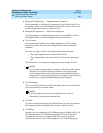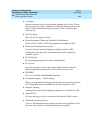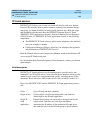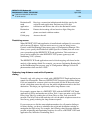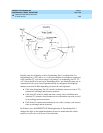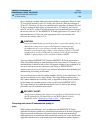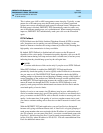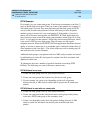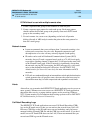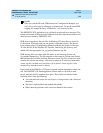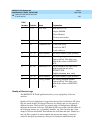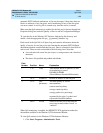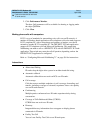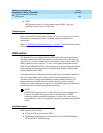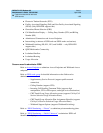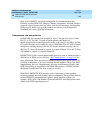
DEFINITY ECS Release 8.2
Administrator’s Guide
555-233-506
Issue 1
April 2000
Features and technical reference
1389IP trunk service
20
Network issues
■ Lucent recommends that you avoid more than 3 consecutive analog voice
to data pack conversions on voice calls. Repeated compression and
decompression of a voice call may seriously degrade sound quality.
■ IP trunks can be used in Distributed Communications System (DCS)
networks, but you’ll need a separate board, such as a C-LAN circuit pack,
to provide a signaling channel. Connect the C-LAN board to the same LAN
as the IP trunk circuit pack. If the IP network is significantly slower than
the network carrying DCS messaging, the DCS messages for a call could
arrive at the destination before the call arrives. See DEFINITY ECS
Administration for Network Connectivity for more information on DCS
networks.
■ If IP calls are tandemed through an intermediate switch and the destination
switch generates the call progress tones, the tones the caller hears may be
distorted because they’ve been compressed and expanded several times.
Alerts
Alerts allow you to monitor the DEFINITY IP Trunk application service on one or
more systems. Whenever an event occurs on a DEFINITY IP Trunk application
that might affect service, a popup window appears on the receiving Windows
NT™ system monitor. For information about setting up alerts refer to DEFINITY
ECS Administration for Network Connectivity.
Call Detail Recording Logs
The DEFINITY IP Trunk application can create Call Detail Recording (CDR)
logs on the IP trunk server so that you can retrieve the records from your LAN.
However, CDR files on the IP trunk server are not backed up, and you have to
manage both the IP trunk CDR file and the CDR logs on the switch. If you don’t
need to access IP Trunk CDR data over the LAN, Lucent recommends that you
not activate CDR logs on the IP trunk server.
PSTN Fallback is used with multiple remote sites
1. Create a separate trunk group for the channels of each line pool.
2. Create a separate route pattern for each trunk group. Each route pattern
should contain the IP trunk group as the primary route and a PSTN trunk
group as the secondary route.
3. For each remote site, create a set (depending on the level off-premise
dialing allowed) of ARS analysis entries that point at the route pattern for
that site’s trunk group.



